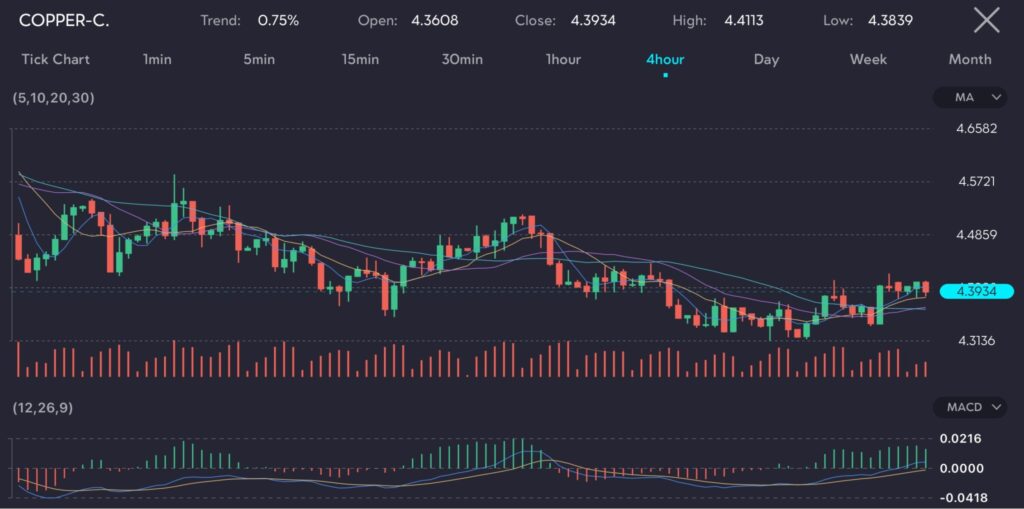Key Points:
- Copper prices consolidate around $4.38 per pound with high production and weak demand.
- The manufacturing PMI contraction in China signals potential economic slowdowns, dampening copper demand.
- Short-term volatility in copper prices is expected due to the current economic indicators and production levels.
In the early Asian session, copper (Symbol: Copper-C) prices consolidate at lows with slight uptick in smaller timeframes. While production remains high in China, demand is still weak.
The official manufacturing PMI for China in June suggested a contraction in activity, which further dampened copper demand.

Picture: Copper prices remain suppressed, as observed on the VT Markets app.
Supply and demand determining copper prices
The continued high production levels in China coupled with weak demand suggest a possible surplus in supply, which could keep prices suppressed. Further, the contraction in the manufacturing PMI in China is a concerning indicator that could signal broader economic slowdowns, impacting copper demand negatively.
Given the current market conditions, it is likely that copper prices will continue to experience volatility in the short term.
Related content: What are commodities and how do you trade them
Price behaviour of copper in the past
In past years, similar economic contractions in major copper-consuming countries like China have led to price declines. For example, during the 2015 Chinese stock market crash, copper prices fell due to fears of reduced demand.
Conversely, during periods of economic stimulus and infrastructure projects, such as how China responded to the 2008 financial crisis, copper prices saw substantial increases due to heightened demand.
Given the current dynamics, copper prices are likely to consolidate in the near term. Market participants should monitor economic indicators closely, as these will likely influence the trajectory of copper.









